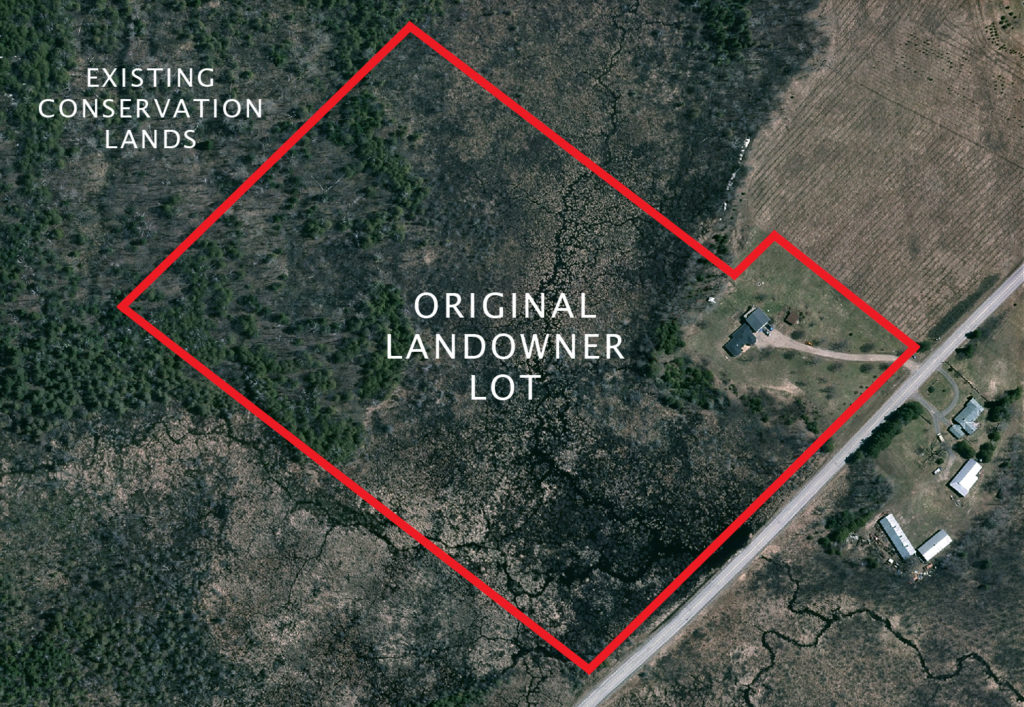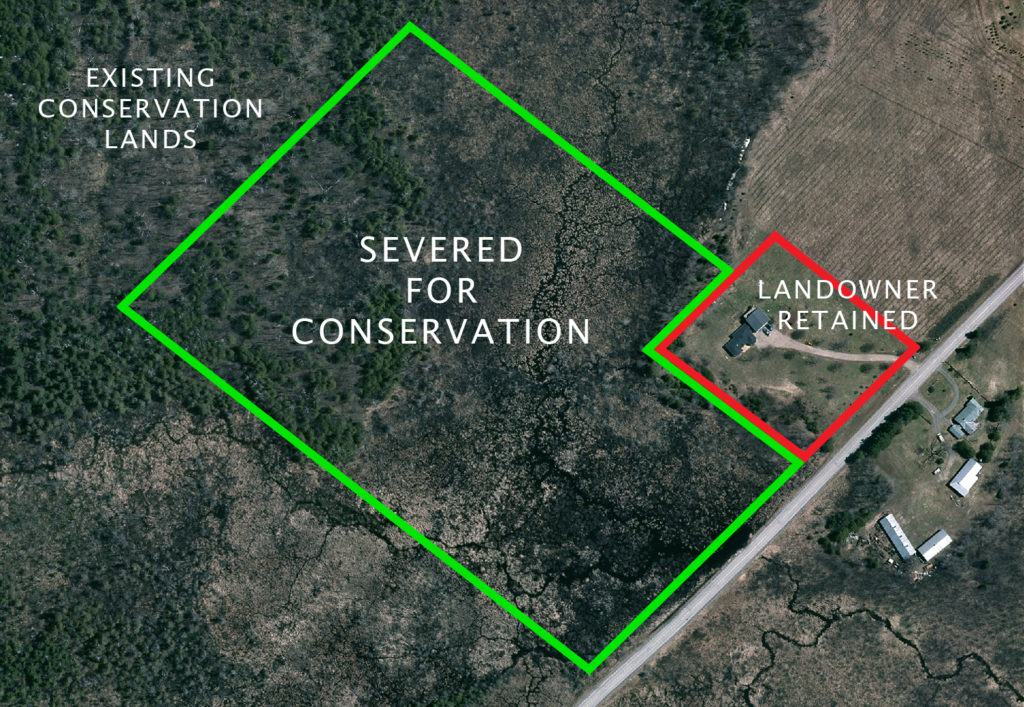The Conservation Severance Process
A conservation severance, also called a partial taking, is a land acquisition method where only a portion of a property is secured for conservation rather than the entire parcel. When pursuing a partial taking for conservation purposes, land trusts can achieve this through either a fee simple purchase or donation scenario.
Usually the “severed” conservation land contains environmentally sensitive lands intended for conservation by the land trust while the “retained” land is kept by the landowner. The retained land typically includes the residence or other buildings and infrastructure. This is a win-win situation for a land trust as most avoid acquiring buildings as part of their portfolio due to the added cost and liability. Further, if the conservation land is purchased, the market value of the severed portion is often lower per acre than the retained portion which typically holds the development value. The severed portion typically has limited development potential in the case of a wetland or environmentally significant land designation.


A partial taking may be an attractive option for a landowner as it offers the following benefits:
- Conservation land is severed while the higher-valued residential property is retained by the landowner.
- A permanent nature preserve is established around the residential property that will be professionally stewarded and protected by a conservation organization.
- Reduced property acreage with an abutting nature preserve is more attractive to future buyers.
- Liability associated with owning and maintaining conservation land or floodplain is removed or reduced.
Severance Process for Land Trusts
To execute a conservation severance, a land trust must either apply for a land severance through the local municipality or work in partnership with a conservation authority. In Ontario, conservation authorities are eligible to by pass the severance process through their exemption in Section 50 (3)(e) of the Ontario Planning Act.
The conservation authority by-pass process has two steps:
- The Conservation Authority obtains a Conservation Authorities Act Section 24 approval by the Minister of Natural Resources for a land acquisition program to preserve environmentally sensitive lands.
- The declaration by an officer of the Conservation Authority takes place at the Land Registry Office at registration of the partial taking.
A partial taking is technically referred to as a direct conveyance by conservation authorities. In this case, a portion of the property would be conveyed from the landowner directly to the conservation authority without requiring approval from the Land Division Committee or Committee of Adjustment. The land trust would then take on the role of conservation land steward with the conservation authority holding title.
Working with a conservation authority can be a mutually beneficial arrangement for completing an acquisition project and could also be the impetus to building a lasting partnership. Each conservation authority operates independently; therefore, a land trust would need to find out if land securement is in fact a priority of the conservation authority they wish to partner with. Once a common goal is identified, partnership roles and expectations need to be negotiated and defined.
In addition to conservation authorities, some municipalities are also willing to partner with land trusts on common conservation goals. Initiate preliminary discussions with a municipal planner before your land trust applies for a partial taking. Discuss your land trust’s mission and explain how the created parcel may benefit the municipality’s planning goals through enhanced protection and green space stewardship.
Partnership opportunities between land trusts, municipalities and conservation authorities may take some time to foster but are worthwhile investments when the outcome is more protected land.
Many municipalities have not dealt with a severance application from a land trust to protect conservation land “in perpetuity.” Municipal official plans are usually written with 20-30 year projections and the term “in perpetuity” is not commonly used to describe land conservation. Land trusts are still not widely understood. Partnership opportunities between land trusts, municipalities and conservation authorities may take some time to foster but are worthwhile investments when the outcome is more protected land. Once a relationship has been developed and a successful partial taking established, future conservation partnership opportunities can be approached with greater confidence.